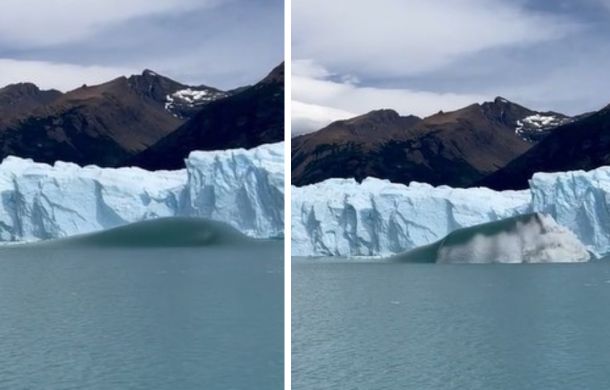Imagine being in a boat and floating by a large glacier. As you’re watching, something begins bubbling up out of the water. You see a huge swell on the surface. As you watch, something rises. Everyone clambers to the side of the boat to see. Is it a whale? A sea monster? Godzilla? Nope, it’s an iceberg!

As the water cascades off the enormous floating iceberg, you can hear the gasps of surprise and wonder from the passengers on the boat. The large mass then resubmerged, only to bounce back to the surface again with less force.

This short video encapsulates an awesome visual experience of nature being nature. But what caused this? To explain that, we need to explore a bit of science. There are three basic reasons that icebergs float. The first is that water is slightly denser than ice in its liquid form (this is why your ice cubes float in a drink). Secondly, icebergs have kazillions of tiny, trapped air bubbles. This gives them a white appearance. Third, and probably least known, is that icebergs are made of freshwater, and the ocean is saltwater. The salt in the water adds to the buoyancy of icebergs.

When you swim in the Atlantic Ocean, your body will float easier than in a freshwater lake because of the salt content. Likewise, swimming in the Mediterranean Sea makes it even easier to float because that body of water has a higher salt content. Now that we understand why icebergs float let’s look at what happened to cause this one to rise so dramatically. Once it finished bouncing, the iceberg settled into a more permanent floating position.
Understanding Why This Iceberg Rose To The Surface
Nobody knows how this iceberg broke off, except maybe geologists who have studied this phenomenon for millennia. We can surmise that the iceberg was a part of the ice shelf you see rising from the surface in the background. As things shifted underwater and water temperatures changed, the ice weakened. This probably caused a crack in the ice shelf. When enough of the crack was exposed to the seawater, it broke away and popped to the surface. Seismic activity from underwater volcanoes and shifting of tectonic plates may also cause parts of an ice shelf to fragment.
As amazing as this video was, the most pressing comments did not involve the iceberg. Most viewers wanted to know, “How did this guy avoid dropping his phone?”

If you enjoyed this amazing video and learning about icebergs, please share it.
You can find the source of this story’s featured image here.
Want to be happier in just 5 minutes a day? Sign up for Morning Smile and join over 455,000+ people who start each day with good news.



